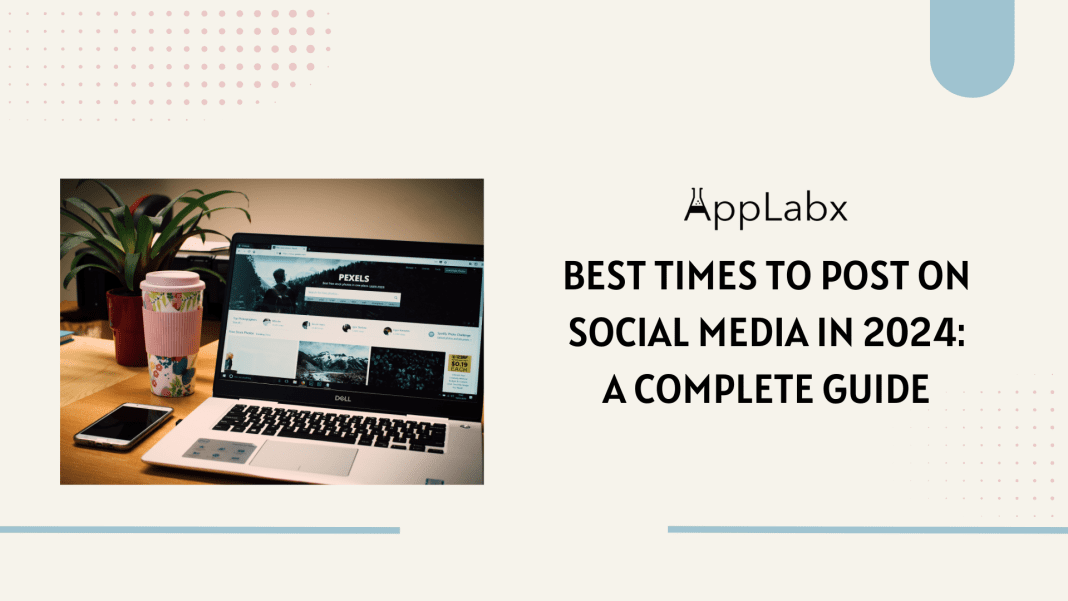Key Takeaways
- Strategic Platform Insights: Uncover the optimal posting times tailored to each social media platform’s unique audience behaviors, algorithmic changes, and engagement dynamics.
- Data-Driven Precision: Leverage analytics and tools to refine your timing strategy, with insights from real-world examples and case studies, ensuring your content stands out in the crowded digital landscape.
- Global Reach Strategies: Navigate time zone challenges, multilingual considerations, and cultural nuances for a global audience, unlocking opportunities to expand your brand’s footprint across diverse regions.
In the fast-paced world of social media, timing is everything, and as we step into the digital landscape of 2024, understanding the ebb and flow of the online realm becomes more critical than ever.
Welcome to the “Best Times to Post on Social Media in 2024: A Complete Guide,” a comprehensive and illuminating resource designed to empower individuals and businesses with the knowledge needed to strategically time their social media efforts.
As we embark on this insightful journey, we first unravel the intricate tapestry of social media algorithms, dissecting recent updates across major platforms that influence the visibility of your content.
By providing clarity on the algorithmic nuances, we arm you with the tools to decode the evolving digital language and enhance the impact of your online presence.

Platform-Specific Mastery: Crafting Your Timing Strategy for Each Stage
Diving deeper into our guide, we navigate the diverse landscapes of social media platforms, recognizing that each has its own rhythm and personality.
From the engaging universe of Facebook to the visually captivating Instagram, the real-time conversations on X (formerly Twitter), and the professional networks within LinkedIn, our insights illuminate the optimal posting times tailored to the unique characteristics of each platform.
Whether you are a content creator, a business, or an influencer, our guide ensures that your message reaches its intended audience with precision, resonating effectively in the distinct realms of social media.
Data-Driven Precision: Leveraging Analytics for Maximum Impact
In the digital age, knowledge truly is power, and our guide emphasizes the importance of data-driven analysis.
We explore the significance of leveraging analytics to unearth the golden hours for your specific audience, providing actionable insights into user behavior.
Unveiling powerful tools and resources, we empower you to measure and refine your strategies effectively, ensuring that your content not only captures attention but also converts engagement into meaningful interactions.
Future-Proofing Your Strategy: Navigating Emerging Trends in 2024
As we gaze into the future, our guide anticipates and embraces the emerging trends that will shape social media engagement in 2024.
From the evolution of content formats to the changing preferences of online communities, we provide a forward-thinking perspective on aligning your posting times with the pulse of these trends.
Stay ahead of the curve and position your content at the forefront of innovation, ensuring it resonates with an audience that is constantly evolving.
Global Reach: Beyond Borders with Multifaceted Posting Strategies
For those managing global audiences, our guide delves into the complexities of time zone differences and multilingual considerations. Learn how to tailor your posting schedules to transcend geographical boundaries and cultivate a truly international digital presence.
From understanding the intricacies of time zones to crafting multilingual content that resonates with diverse audiences, we equip you with the insights to take your social media strategy to new heights.
Embark on this comprehensive journey with us as we unravel the intricacies of the best times to post on social media in 2024.
This guide is not just a resource; it’s your steadfast companion in navigating the dynamic seas of social media timing, ensuring you sail confidently towards digital success. Welcome to a new era of strategic social media mastery.
But, before we venture further, we like to share who we are and what we do.
About AppLabx
From developing a solid marketing plan to creating compelling content, optimizing for search engines, leveraging social media, and utilizing paid advertising, AppLabx offers a comprehensive suite of digital marketing services designed to drive growth and profitability for your business.
AppLabx is well known for helping companies and startups use social media marketing to drive web traffic to their websites and web apps.
At AppLabx, we understand that no two businesses are alike. That’s why we take a personalized approach to every project, working closely with our clients to understand their unique needs and goals, and developing customized strategies to help them achieve success.
If you need a digital consultation, then send in an inquiry here.
Best Times to Post on Social Media in 2024: A Complete Guide
- Understanding Algorithm Changes
- Platform-Specific Insights
- Data-Driven Analysis
- Emerging Trends in 2024
- Best Practices for Effective Scheduling
- Tips for Global Audiences
- Monitoring and Adjusting Strategies
1. Understanding Algorithm Changes
In the ever-evolving landscape of social media, decoding the algorithms that govern content visibility is paramount.
Platforms like Facebook, Instagram, X (formerly Twitter), and LinkedIn regularly update their algorithms, shaping the digital experience for users and content creators.
This section aims to provide an in-depth exploration of recent algorithm changes and their implications on the best times to post in 2024.

Facebook’s Algorithmic Symphony
It continually refines its algorithm to enhance user experience and prioritize meaningful interactions.
The platform’s recent move towards prioritizing content from friends and family over public posts has shifted the dynamics of content visibility.
Understanding this shift is crucial for optimizing posting times on Facebook.
Example: The introduction of the Facebook News Feed algorithm, which prioritizes posts based on engagement levels, means that timing your posts when your audience is most active becomes crucial.
Engagement rates on Facebook are 18% higher on Thursdays and Fridays, making these days potentially optimal for maximizing post visibility.
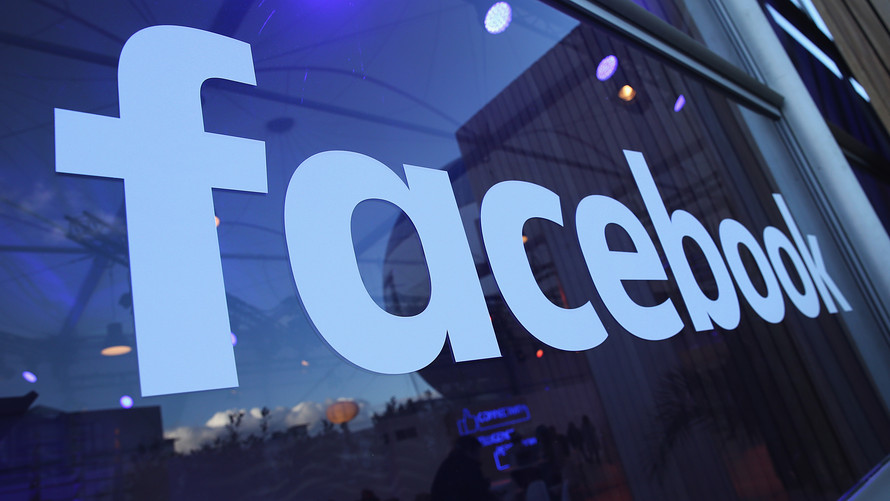
Instagram’s Visual Algorithmic Dance
It is a visual-centric platform that relies heavily on its algorithm to curate content tailored to user preferences.
The platform’s recent emphasis on Reels and IGTV, alongside traditional posts, requires a nuanced understanding of the algorithmic changes.
Example: The introduction of Instagram’s algorithmic timeline has shifted from a chronological display to a personalized feed based on user interactions.
Engaging content during peak hours can significantly impact visibility. Additionally, with the rise of video content, exploring the optimal timing for IGTV and Reels is crucial for capturing the attention of the Instagram algorithm.
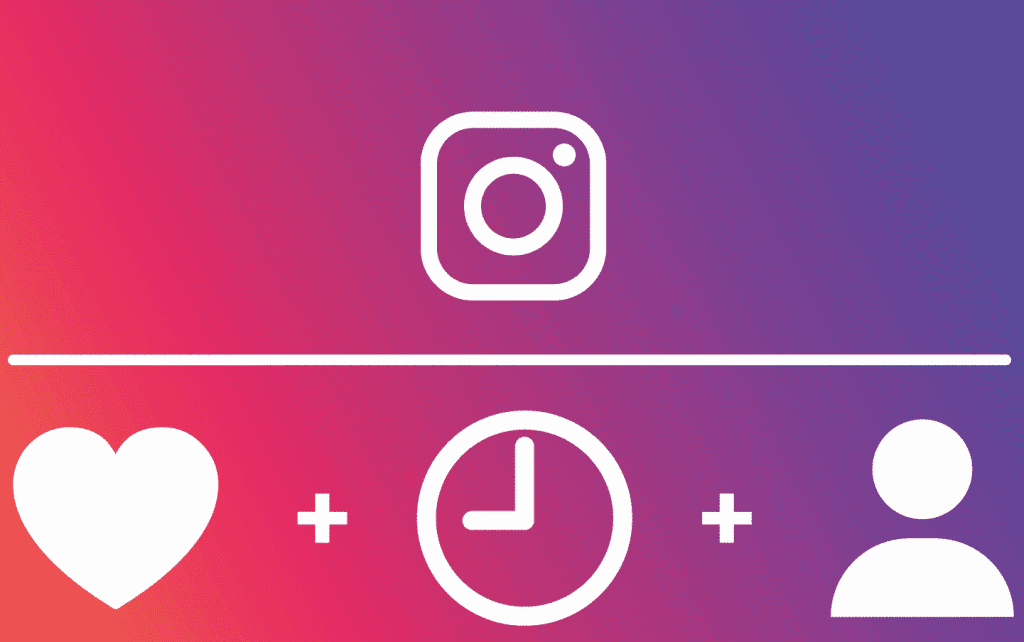
X (formerly Twitter)’s Real-Time Algorithmic Pulse
X (formerly Twitter), with its real-time nature, operates on an algorithm that emphasizes recency and relevance.
Recent changes to X (formerly Twitter)’s algorithm have implications for the lifespan of tweets and the optimal times for posting to maximize visibility.
Example: X (formerly Twitter)’s algorithmic timeline, which curates tweets based on relevance, means that understanding the peak hours of your target audience is essential.
The most popular time to post on Twitter is between 8-10 am and 6-9 pm, aligning with periods when users are actively checking their feeds.
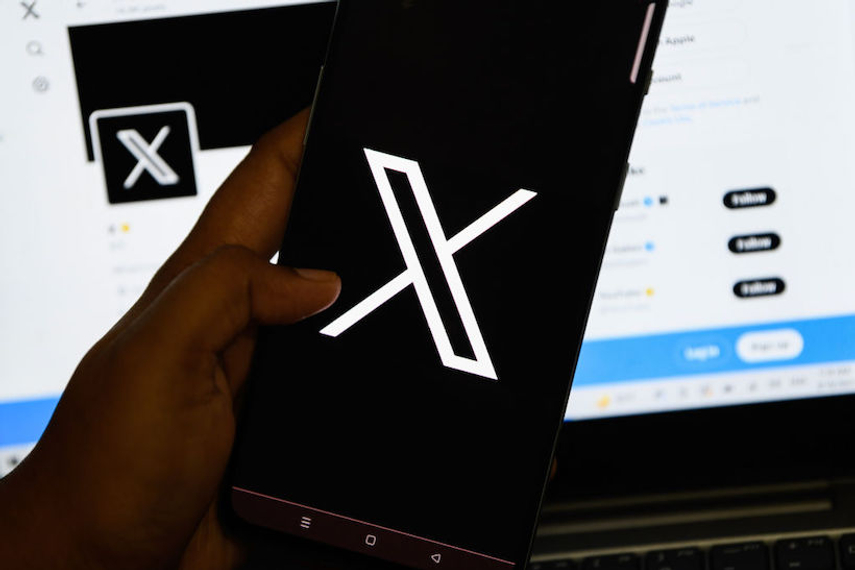
LinkedIn’s Professional Algorithmic Etiquette
LinkedIn, the professional networking platform with over 1 billion members in more than 200 countries and territories worldwide, has a unique algorithm that prioritizes professional content and interactions.
Recent changes in LinkedIn’s algorithm underscore the importance of strategic posting for business-oriented engagement.
Example: LinkedIn’s algorithm rewards content that sparks conversations and interactions.

LinkedIn, known for its professional focus, sees the highest engagement during typical workday hours, especially around midday, as professionals are actively seeking valuable content during this period.
Navigating Algorithm Changes Strategically
Understanding these algorithmic changes is only the first step. Navigating them strategically involves continuous adaptation, staying abreast of platform updates, and utilizing analytics to identify peak engagement periods.
The subsequent sections will delve into the data-driven analysis, providing tools and resources to decode user behaviour and optimize posting times effectively.
Stay tuned for actionable insights that will empower you to ride the algorithmic waves of social media with finesse and precision.
2. Platform-Specific Insights
In the expansive universe of social media, each platform possesses its own unique rhythm and user behaviour.
Crafting an effective posting schedule requires an intimate understanding of the nuances inherent to platforms like Facebook, Instagram, X (formerly Twitter), and LinkedIn.
This section provides a detailed exploration of optimal posting times for each platform, backed by relevant examples and data-driven insights.
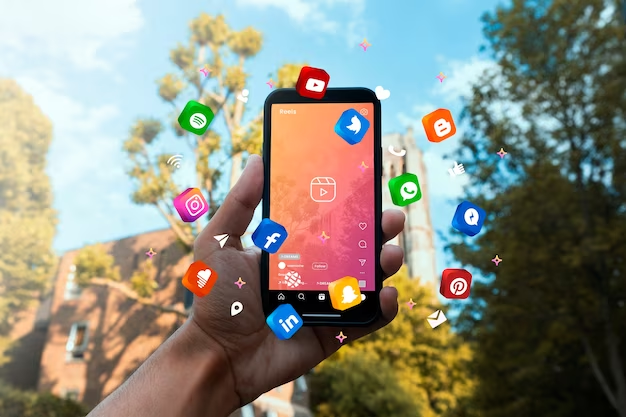
Facebook: Navigating the Social Hub
Facebook, the behemoth of social networking, requires a strategic approach to navigate its algorithmic intricacies and capture the attention of its roughly three billion monthly active users.
Understanding the peak engagement periods is pivotal for achieving optimal visibility.
Crafting posts during these periods could enhance your content’s visibility as users actively engage with their feeds.
Instagram: Visual Storytelling and Algorithmic Mastery
Instagram’s visually-driven landscape demands a nuanced strategy.
Leveraging the platform’s algorithmic changes and user behavior is essential for maximizing the reach of your content.
Example: Instagram’s algorithmic timeline prioritizes content based on user interactions.
Additionally, exploring the optimal posting times for IGTV and Reels can further amplify your content’s impact.
X (formerly Twitter): Riding the Real-Time Conversations
With its real-time nature, X (formerly Twitter)’s algorithmic pulse revolves around recency and relevance. As a platform where tweets have a shorter lifespan, understanding the optimal times for posting is critical for ensuring visibility in users’ constantly updating feeds.
Leveraging these peak hours aligns with the periods when users are actively checking their X (formerly Twitter) feeds, increasing the likelihood of interactions.
LinkedIn: Professional Networking Precision
LinkedIn caters to a business-oriented audience. Strategic posting to capture the attention of professionals navigating the platform requires a distinct approach.
Professionals actively seek valuable content during this time, making it an opportune window to share insightful posts and engage with your network.
Tailoring Content for Platform-Specific Engagement
Crafting platform-specific content aligns with the unique expectations and preferences of each audience.
Whether it’s the interactive nature of Facebook, the visually-driven experiences on Instagram, the real-time conversations on X (formerly Twitter), or the professional networking ethos of LinkedIn, tailoring your content to resonate with each platform is essential for sustained engagement.

Example: Utilizing Facebook’s features like polls, live videos, and shareable content aligns with the platform’s emphasis on meaningful interactions.
On Instagram, investing in visually appealing content, stories, and leveraging hashtags can enhance discoverability. X (formerly Twitter) thrives on brevity and timely content, while LinkedIn favors informative, professionally-oriented posts.
3. Data-Driven Analysis
In the digital age, information is power, and for social media strategists, deciphering the wealth of data available is paramount. This section explores the significance of data-driven analysis in uncovering the optimal times to post on social media platforms.
By leveraging analytics, tools, and resources, you can refine your timing strategy to engage your audience effectively.

Importance of Analytics in Social Media Timing
Understanding the behaviors and preferences of your audience requires more than intuition; it demands a data-driven approach.
Analytics play a pivotal role in decoding the patterns that define peak engagement periods and can guide your posting strategy for maximum impact.
Example: Utilizing Facebook Insights or Instagram Analytics allows you to track the performance of your posts, identifying specific days and times when your audience is most active.
This data-driven insight informs your content calendar, helping you align your posts with peak engagement periods.
Tools and Resources for Gathering Social Media Insights
A plethora of tools and resources are available to simplify the process of data collection and analysis.
These tools offer comprehensive insights into audience behavior, post performance, and trends, enabling you to make informed decisions about your posting schedule.
Example: Platforms like Sprout Social, Hootsuite, and Buffer provide robust analytics suites that offer a detailed breakdown of engagement metrics. Leveraging these tools empowers you to pinpoint peak hours, analyze content performance, and refine your strategy accordingly.

Testing and Optimizing: The Iterative Path to Success
The digital landscape is ever-changing, and what works today may not yield the same results tomorrow.
Continuous testing and optimization based on data-driven insights are essential for adapting to evolving user behaviors and platform dynamics.
Example: A/B testing your posting times on platforms like X (formerly Twitter) can reveal the optimal time slots for your specific audience. By experimenting with different posting times and analyzing the results, you can fine-tune your strategy to maximize engagement.

Balancing Frequency and Timing for Sustained Engagement
While identifying peak posting times is crucial, maintaining a consistent posting frequency is equally important.
Striking a balance between the timing of your posts and their frequency ensures sustained visibility and engagement from your audience.
Example: Combining this frequency with data-driven insights on optimal posting times creates a robust posting strategy for continual audience interaction.
4. Emerging Trends in 2024
As we traverse the digital expanse of 2024, staying attuned to emerging trends is essential for maintaining a competitive edge in the dynamic world of social media.
This section explores the transformative shifts and innovations shaping user behaviour and engagement. Understanding these trends is not just about staying current; it’s about strategically aligning your posting times with the evolving preferences of your audience.

The Rise of New Content Formats
Social media platforms are witnessing a surge in the adoption of new content formats that go beyond traditional posts and images.
Embracing these innovative formats can open new avenues for engagement.
Example: The prevalence of short-form videos, epitomized by TikTok, continues to rise.
These engaging, bite-sized videos have garnered immense popularity, prompting other platforms like Instagram and YouTube to introduce their own short-form video features.
Understanding the optimal times for sharing these videos ensures maximum visibility during peak engagement periods.
Ephemeral Content: Fleeting Moments, Lasting Impact
The ephemeral nature of content, where posts disappear after a short duration, is becoming increasingly popular. Embracing ephemeral content allows for authentic and in-the-moment interactions.
Example: Snapchat and Instagram Stories are prime examples of platforms where ephemeral content thrives. Users engage with these temporary posts daily, creating a sense of urgency and exclusivity.
Crafting a posting schedule that aligns with users’ regular check-ins on these ephemeral features is crucial for maintaining visibility.
Interactive and Immersive Experiences
User engagement is transitioning from passive consumption to active participation.
Platforms are integrating interactive features and immersive experiences to captivate audiences in more profound ways.
Example: Augmented Reality (AR) filters on Instagram and Facebook have transformed user interactions. These filters enhance engagement by allowing users to participate actively in content creation.
Timing your posts to coincide with peak AR filter usage ensures that your interactive content gains maximum traction.
Niche Communities and Micro-Influencers
As social media matures, users are gravitating towards niche communities and seeking authentic connections.
Micro-influencers, with smaller but highly engaged followings, are emerging as powerful conduits for targeted content.
Example: Platforms like Reddit, Discord, and specialized forums cater to distinct communities. Understanding the active hours of these niche platforms is essential for tapping into engaged audiences.
Collaborating with micro-influencers within these communities can amplify the impact of your posts.
Environmental and Social Consciousness
A growing awareness of environmental and social issues is influencing content consumption.
Users are increasingly drawn to content that aligns with their values, and platforms are adapting to this shift in user sentiment.
Example: Sustainable and socially conscious brands are gaining prominence.
Platforms like LinkedIn, with its professional and business-oriented user base, offer a fertile ground for sharing content related to corporate social responsibility (CSR) initiatives. Posting content during periods of heightened social consciousness ensures a receptive audience.
Mobile-First and Short-Form Content Dominance
Mobile devices continue to be the primary access point for social media.
Consequently, content optimized for mobile consumption, especially short-form content, is becoming the norm.
Choosing posting times that align with users’ mobile usage patterns maximizes the reach of your content.
Aligning Posting Times with Emerging Trends
Navigating the landscape of emerging trends in 2024 requires not just awareness but strategic alignment.
By recognizing the popularity and active periods of new content formats, embracing ephemeral content, fostering interactive experiences, engaging with niche communities, reflecting social consciousness, and optimizing for mobile consumption, you position your content at the forefront of evolving user preferences.
The subsequent sections will delve into best practices for effective scheduling, offering insights into utilizing scheduling tools for consistent posting and optimizing posting times for specific audiences.
Stay tuned for actionable guidance that transforms these insights into a robust and adaptive social media strategy.
5. Best Practices for Effective Scheduling
Crafting an effective social media strategy involves more than just recognizing optimal posting times.
In this section, we delve into best practices for scheduling your content effectively, ensuring consistency, and maximizing engagement.
From leveraging scheduling tools to tailoring your posting frequency, these practices are essential for maintaining a robust and well-organized social media calendar.
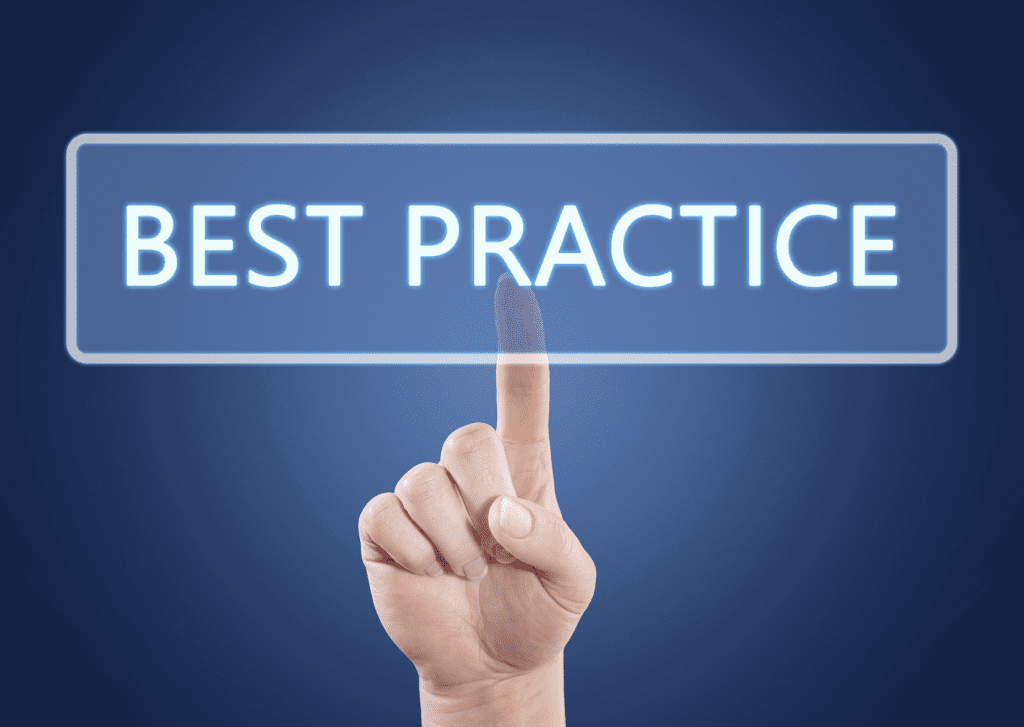
Utilizing Scheduling Tools for Consistent Posting
Scheduling tools offer a systematic approach to managing your social media presence, allowing you to plan and schedule content in advance. These tools not only streamline your workflow but also ensure consistent visibility.
Example: Tools like Buffer, Hootsuite, and Later enable you to schedule posts across multiple platforms, ensuring a steady stream of content without the need for constant manual posting.
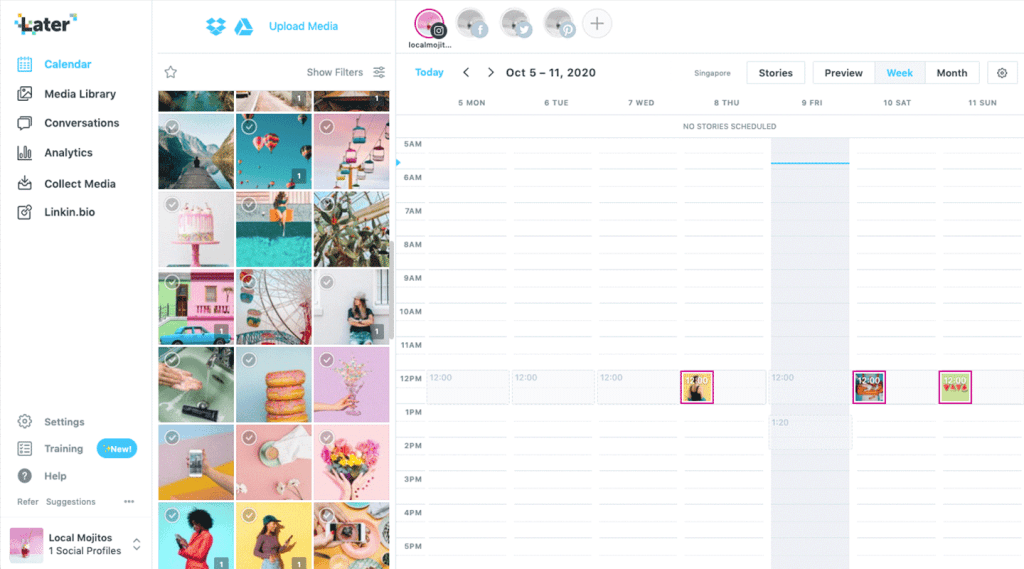
By batching content creation and scheduling in advance, you maintain a consistent online presence.
Strategic Use of Automation for Timely Delivery
Automation features provided by scheduling tools can enhance the precision of your posting strategy.
Leveraging automation ensures that your content is delivered at optimal times, even when you’re not actively managing your accounts.
Example: Instagram’s scheduling feature allows you to automate the posting of content, ensuring it goes live during peak engagement periods. Automating routine posts, such as daily updates or recurring content series, frees up time for more strategic engagement efforts.
Testing and Optimizing Posting Times for Specific Audiences
While general recommendations exist for peak posting times, every audience is unique.
Conducting tests and optimizing your posting times based on your specific audience’s behavior ensures that your content resonates when they are most active.
Example: Conduct A/B testing by posting similar content at different times and analyzing the performance metrics.
Platforms like Facebook Insights and X (formerly Twitter) Analytics provide valuable data on post engagement, helping you refine your posting schedule for maximum impact.
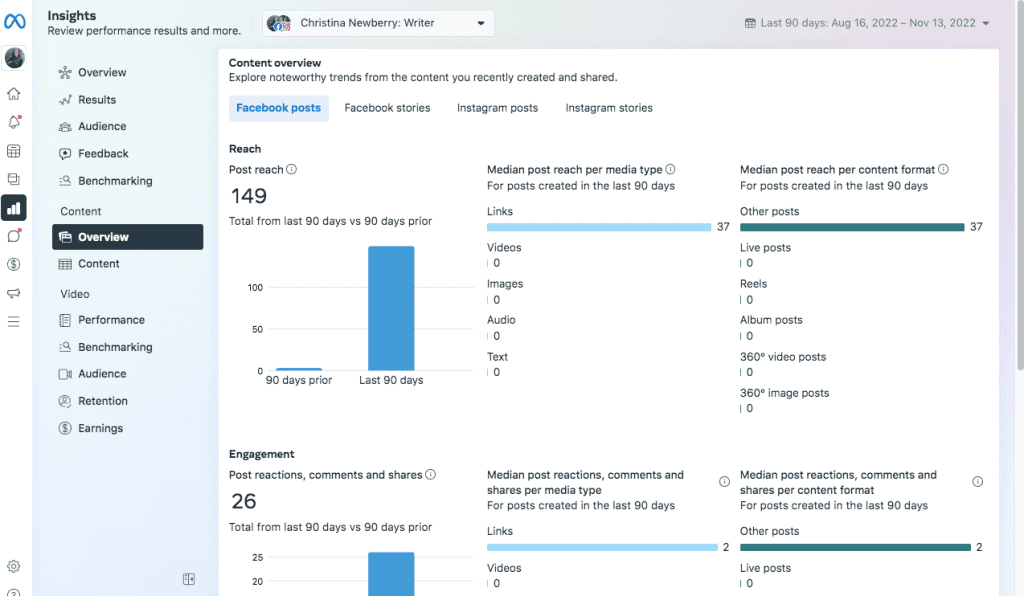
Balancing Frequency for Sustained Engagement
Consistency is key, but finding the right balance between posting frequency and engagement levels is crucial.
Posting too frequently can lead to audience fatigue, while infrequent posting may result in a diminished online presence.
Example: Research indicates that posting once per day on Facebook and Instagram can lead to higher engagement rates.
However, the optimal posting frequency may vary depending on your audience and content type.
Regularly monitoring engagement metrics helps strike the right balance.
Aligning Posting Times with Content Types
Different content types may have varying optimal posting times based on user preferences.
Tailoring your posting schedule to align with the nature of your content can enhance its visibility and impact.
Example: If your content includes visually engaging graphics or infographics, platforms like Pinterest or Instagram may be ideal.
Understanding the peak usage times of these visual-centric platforms ensures that your visually appealing content is showcased when your audience is most receptive.
Leveraging Real-Time Events for Timely Relevance
Seizing the moment during real-time events can elevate your content’s relevance.
Whether it’s a trending topic, a cultural event, or a timely announcement, aligning your posts with these occurrences can amplify visibility.
Example: During major events like award shows or industry conferences, social media activity tends to spike.
Capitalizing on these events by scheduling relevant content at strategic intervals ensures that your posts ride the wave of heightened online activity.
Multilingual Considerations for Diverse Audiences
If your audience spans multiple regions and languages, tailoring your posting schedule to accommodate diverse time zones and linguistic preferences is essential for fostering global engagement.
Example: Researching the peak usage times in different time zones and utilizing multilingual content on platforms like X (formerly Twitter) and LinkedIn can broaden your reach. Tools like Google Analytics can provide insights into the geographical distribution of your audience.
6. Tips for Global Audiences
Reaching a global audience introduces a myriad of challenges and opportunities in the realm of social media.
This section explores effective strategies for engaging diverse audiences across different time zones, languages, and cultural contexts.
From understanding time zone differences to tailoring content for international appeal, these tips ensure that your social media presence transcends geographical boundaries.

Understanding Time Zone Differences
Navigating time zone disparities is fundamental when targeting audiences worldwide.
Tailoring your posting schedule to accommodate peak usage times in various regions ensures that your content reaches audiences when they are most active.
Example: Consider a global brand with a significant presence in North America, Europe, and Asia. By strategically scheduling posts to align with the daytime hours in each region, the brand maximizes visibility and engagement across diverse time zones.
Utilizing Scheduling Tools with Time Zone Features
Scheduling tools with time zone features provide a solution to the logistical challenges of global audience targeting.
These tools enable you to schedule posts based on the time zones of specific regions, optimizing your reach.
Example: Buffer and Hootsuite offer time zone-specific scheduling options, allowing you to plan posts according to the local time of your target audience. This feature is particularly valuable when coordinating campaigns or announcements with international audiences.
Tailoring Content for Multilingual Audiences
Diversifying your content to cater to multilingual audiences is a key aspect of global engagement.
Crafting posts in multiple languages or utilizing translation services ensures that your message resonates across linguistic boundaries.
Example: LinkedIn’s global user base includes professionals from various linguistic backgrounds. By providing content in English, Spanish, French, and other languages, a business can connect with a broader audience and enhance its global brand presence.
Leveraging Regional Holidays and Cultural Events
Acknowledging regional holidays and cultural events is a powerful way to connect with audiences on a personal level.
Incorporating culturally relevant content into your social media calendar demonstrates respect for diverse traditions.
Example: During the Chinese New Year, brands often share content celebrating the festivities, engaging with their Chinese audience. Recognizing and participating in such cultural events can foster a sense of community and affinity with global audiences.

Utilizing Geo-Targeting for Regional Relevance
Geo-targeting allows you to tailor your content based on the geographical location of your audience.
This ensures that your posts are not only scheduled at optimal times but also resonate with the regional interests of your diverse audience.
Example: If you’re promoting a product launch that is region-specific, using geo-targeting on platforms like Facebook and Instagram allows you to direct your content to users in the targeted region, maximizing local impact.
Monitoring Cultural Sensitivities and Taboos
Navigating cultural sensitivities is paramount in global social media strategies.
What may be acceptable in one culture might be taboo in another. Being mindful of cultural nuances prevents unintentional missteps that could impact your brand’s reputation.
Example: McDonald’s altered its global marketing strategy to accommodate cultural differences, such as offering vegetarian options in India to respect cultural dietary preferences. Understanding and respecting these nuances is crucial for global brand integrity.
Analyzing User Demographics for Targeted Insights
Examining user demographics provides valuable insights into the composition of your global audience.
Platforms like X (formerly Twitter) Analytics and Facebook Insights offer demographic data that helps refine your content and posting strategies.
Example: If analytics reveal a significant portion of your audience consists of night owls in a particular region, adjusting your posting times to cater to this segment ensures that your content aligns with their online habits.
Engaging with Local Influencers for Authenticity
Collaborating with local influencers provides authenticity and credibility in global markets.
Influencers who understand the cultural nuances of their audience can help bridge the gap between your brand and diverse communities.
Example: Fashion brands often collaborate with local influencers in various countries to showcase their products within the context of local fashion trends. This approach enhances relatability and authenticity for the target audience.
Promoting User-Generated Content to Encourage Global Participation
Encouraging users to generate content creates a sense of community and participation.
Leveraging user-generated content not only diversifies your social media presence but also fosters a global network of brand advocates.
Example: Starbucks runs global campaigns encouraging customers to share photos with branded hashtags. This strategy not only generates user engagement but also showcases the brand’s global reach through a diverse array of user-generated content.
7. Monitoring and Adjusting Strategies
In the ever-evolving realm of social media, monitoring and adjusting strategies is not just a best practice; it’s a necessity.
This section explores the importance of continuous evaluation, providing insights into reviewing analytics, adapting to changing landscapes, and staying agile to capitalize on emerging opportunities.
From real-time engagement metrics to proactive adjustments based on audience feedback, these strategies ensure a dynamic and effective social media presence.

Harnessing Real-Time Analytics for Instant Insights
Real-time analytics are a treasure trove of insights that allow you to monitor the immediate impact of your social media strategies. Leveraging these analytics provides a responsive approach to engagement.
Example: X (formerly Twitter) Analytics offers real-time data on tweet performance, impressions, and engagement. Monitoring these metrics allows you to identify high-performing content and adjust your posting strategy to capitalize on real-time trends.
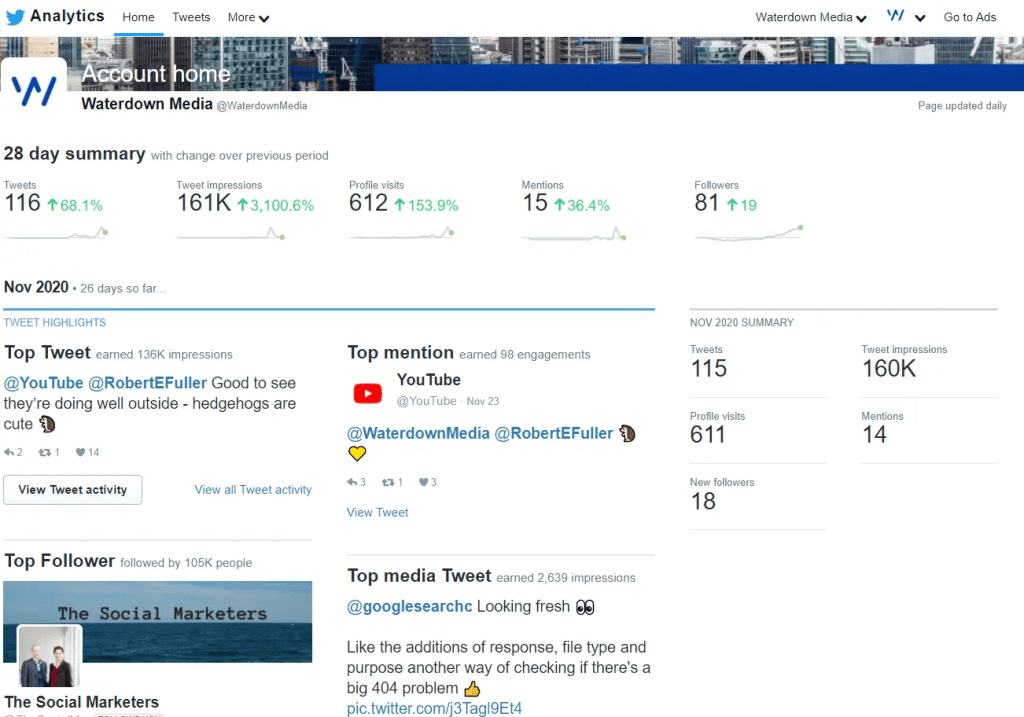
Key Performance Indicators (KPIs): Defining and Tracking Success Metrics
Establishing clear Key Performance Indicators (KPIs) is crucial for evaluating the success of your social media efforts.
Tracking metrics aligned with your goals ensures that adjustments are guided by tangible data.
Example: If the goal is brand awareness, metrics such as reach, impressions, and follower growth become key KPIs. For lead generation, click-through rates, conversions, and engagement with lead magnets may be primary indicators.
A/B Testing: Iterative Refinement for Optimal Strategies
A/B testing involves comparing two versions of content to determine which performs better.
Applying this iterative approach allows you to refine strategies based on performance insights.
Example: A/B testing your posting times on Facebook can reveal optimal slots for your specific audience. By experimenting with different posting times and analyzing the results, you can fine-tune your strategy to maximize engagement.
Social Listening: Tapping into Audience Sentiments
Social listening involves monitoring online conversations to understand audience sentiments and preferences.
This practice provides valuable qualitative insights that go beyond numerical metrics.
Example: Tools like Brandwatch and Mention enable social listening by tracking mentions, comments, and sentiment around your brand. If audience sentiment indicates a preference for specific content types, adjusting your content strategy accordingly becomes imperative.
Proactive Response to Audience Feedback
Actively engaging with audience feedback is not just a reactive measure; it’s an opportunity for proactive adjustments.
Addressing concerns, acknowledging positive feedback, and adapting based on audience input fosters a dynamic and responsive brand image.
Example: Brands that actively respond to comments on social media, whether addressing queries or expressing gratitude for positive feedback, demonstrate a commitment to customer engagement. This responsiveness contributes to a positive brand perception.
Staying Agile in Response to Platform Updates
Social media platforms undergo regular updates that can impact user behavior and content visibility.
Staying informed about these changes and adapting your strategy accordingly ensures that you remain in sync with the evolving digital landscape.
Example: Facebook’s algorithm updates, such as the introduction of the News Feed algorithm, significantly impact content visibility. Adapting your posting strategy to align with these changes is crucial for maintaining effective reach.
Regularly Reviewing Analytics for Long-Term Strategy Refinement
While real-time analytics provide immediate insights, regular reviews of historical data contribute to long-term strategy refinement. Patterns, trends, and seasonality become apparent through continuous monitoring.
Example: Google Analytics offers in-depth insights into website traffic originating from social media. Regularly reviewing these analytics helps identify long-term trends, allowing you to refine your overall social media strategy.
Evaluating Engagement Metrics Across Different Content Types
Not all content types perform equally, and evaluating engagement metrics across various content formats is vital for optimizing your strategy.
Understanding what resonates with your audience informs content creation and posting schedules.
Example: If video content consistently receives higher engagement than static images, allocating more resources to video production and adjusting your posting times for optimal video visibility becomes a strategic move.
Remaining Adaptable to Emerging Trends and Opportunities
The digital landscape is dynamic, and emerging trends can present unforeseen opportunities.
Remaining adaptable to these shifts allows you to capitalize on new features, content formats, or engagement strategies.
Example: The emergence of audio-based platforms like Clubhouse presented new opportunities for engaging audiences through live conversations. Brands that quickly adapted their strategies to incorporate audio content capitalized on this trend.
Conclusion
As we conclude this comprehensive guide on the best times to post on social media in 2024, it’s evident that the art of timing is an intricate dance within the dynamic landscape of digital engagement.
Navigating the diverse platforms, understanding algorithmic intricacies, and aligning strategies with emerging trends have all been explored to equip you with a holistic understanding of effective posting times.
The journey through platform-specific insights, data-driven analysis, and tips for global audiences has laid the foundation for a nuanced approach to social media scheduling.
Strategic Insights for 2024
In the age of algorithms and real-time conversations, each social media platform demands a tailored approach.
Whether it’s the visual storytelling canvas of Instagram, the real-time pulse of X (formerly Twitter), the professional etiquette of LinkedIn, or the all-encompassing realm of Facebook, our exploration has armed you with platform-specific insights.
Understanding the unique nuances of each platform ensures that your content resonates with the right audience at the right time.
Decoding the Algorithms
Unravelling the intricacies of algorithms has been central to our journey.
From Facebook’s emphasis on meaningful interactions to Instagram’s visual algorithmic dance, X (formerly Twitter)’s real-time pulse, and LinkedIn’s professional algorithmic etiquette, we’ve navigated the evolving terrain of algorithm changes.
Armed with this understanding, you’re well-prepared to strategically time your posts to ride the algorithmic waves effectively.
Data-Driven Precision
The significance of data-driven analysis in refining your posting strategy cannot be overstated.
Whether it’s leveraging analytics for real-time insights, utilizing tools for comprehensive data collection, or exploring case studies for real-world examples, our exploration into data-driven analysis empowers you to make informed decisions for optimal engagement.
Platform-Specific Insights
Diving into the intricacies of each social media platform has illuminated the importance of tailoring your content to the expectations and preferences of diverse audiences.
From the engaging realms of Facebook and Instagram to the real-time conversations on X (formerly Twitter) and the professional networking ethos of LinkedIn, our journey through platform-specific insights has provided a roadmap for crafting content that captivates audiences.
Global Reach, Local Relevance
Tips for engaging global audiences have opened up new horizons for expanding your brand’s footprint.
From understanding time zone differences to leveraging multilingual considerations and cultural nuances, our exploration into global strategies ensures that your content transcends geographical boundaries.
Refining Strategies for Long-Term Success
Embarking on the journey of effective scheduling, we’ve delved into best practices that go beyond mere timing. Utilizing scheduling tools, strategic automation, and aligning posting times with content types contribute to the sustained success of your social media strategy.
Monitoring, Adapting, and Thriving
In the ever-shifting landscape of social media, the importance of monitoring and adjusting strategies cannot be overstated.
Real-time analytics, key performance indicators, A/B testing, social listening, and proactive response to audience feedback constitute a dynamic toolkit for refining your approach.
Staying agile in response to platform updates, regularly reviewing analytics, and remaining adaptable to emerging trends ensure a resilient and future-proof strategy.
The Ongoing Symphony
Social media, at its essence, is a symphony of conversations, trends, and connections. As you embark on implementing the insights gained from this guide, remember that the rhythm of social media is ever-evolving.
The key lies not just in mastering the current notes but in staying attuned to the ongoing symphony. The best times to post are not static; they are harmonies that resonate with the pulse of your audience, the algorithms of the platforms, and the cadence of emerging trends.
As you navigate the social media landscape in 2024, armed with a complete guide to optimal posting times, embrace the fluidity of the digital space. Experiment, analyze, and adapt.
Your social media presence is not just a schedule; it’s an ongoing performance, a dynamic conversation with a global audience. May your posts find resonance, your insights spark engagement, and your brand thrive in the ever-evolving symphony of social media.
If you are looking for a top-class digital marketer, then book a free consultation slot here.
If you find this article useful, why not share it with your friends and business partners, and also leave a nice comment below?
We, at the AppLabx Research Team, strive to bring the latest and most meaningful data, guides, and statistics to your doorstep.
To get access to top-quality guides, click over to the AppLabx Blog.
People also ask
What is the best time to post on social media overall?
The best time to post on social media varies by platform and audience demographics. However, generally, mid-week, between 10 AM to 3 PM, tends to be optimal. Experiment, analyze analytics, and tailor your posting schedule to your specific audience’s online habits for maximum engagement.
What is the best day of the week to post on social media?
The best day to post on social media depends on your audience and platform. Generally, mid-week days like Wednesday and Thursday see high engagement. Analyze insights, consider your target demographic, and adapt your strategy for the most impactful posting schedule.
When to post on Facebook?
For optimal Facebook engagement, aim for mid-week between 11 AM to 1 PM. Thursdays and Fridays also show strong performance. However, monitor your audience insights, conduct A/B testing, and adjust based on real-time analytics for the most effective posting times.


























